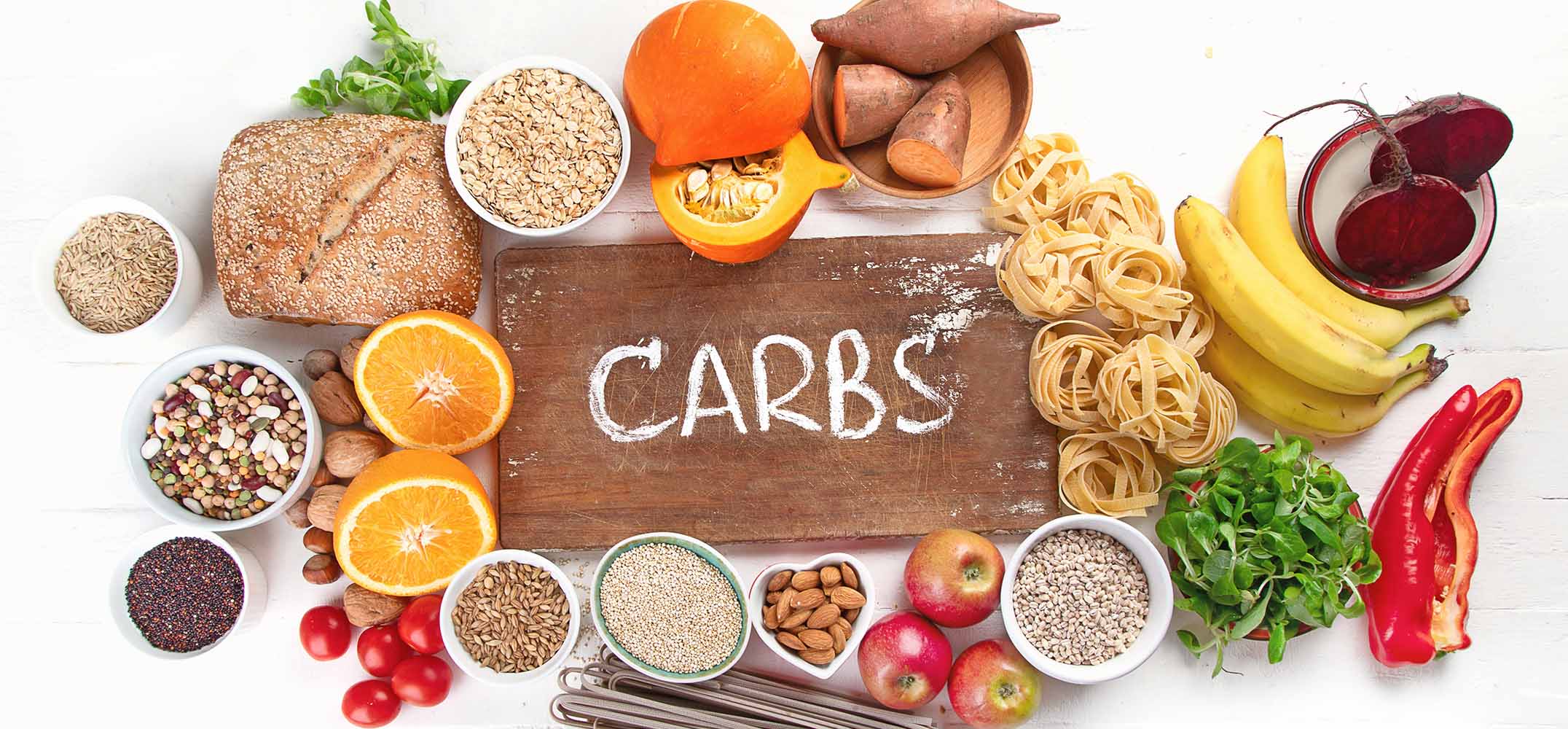Carbohydrates are one of the three macronutrients. They are organic compounds like sugars, starches, and fibers, providing energy for the body through glucose. You’ll find carbohydrates in dairy, fruit, vegetables, grains, beans and seeds. The majority of simple carbohydrates eaten eventually turn into glucose molecules after digestion, which is their simplest form. Glucose is then absorbed, transported around the body and eventually used by our cells, brain and muscles for energy. But not all carbohydrates are created equally. Understanding the different types of carbs, how they impact blood sugar levels, and their role in overall health and performance can help you make smarter dietary choices.
For example, even though both an apple and a piece of chocolate contain sugar, they affect your body differently. The apple provides natural sugars along with fibre, vitamins, and antioxidants which slow down digestion and provide a more sustained release of energy. On the other hand, chocolate contains added sugars with little to no fibre, causing a faster and higher spike in blood sugar, followed by a crash in energy levels.
Glycemic index
This is why whole, fibre-rich carbohydrates like fruits, vegetables, and wholegrains are better for steady energy levels, while highly processed carbs and sugary foods can lead to short, quick energy bursts followed by fatigue. This is where the glycaemic index comes into play. This is a scale from 0 to 100 which rates different foods based on how they affect blood sugar levels. The higher the GI (closer to 100) the higher and quicker the effect on blood sugar levels.
| Lower GI | Higher GI | |
| Fruits | Whole fruits with skin: apples, apricots, peaches and plums | • Fruit juices
• Dried fruits • Canned fruits in juice: pineapple, watermelon, mango |
| TIPS | 💡Eat fruit with the skin on to lower GI
💡Fresh fruit is the best option 💡Strawberries, raspberries, blackberries and passionfruit have less carbohydrate compared to other fruits and have less effect on blood glucose levels. |
|
| Vegetables | • Non-starchy green vegetables: spinach, cabbage, kale, cucumber & lettuce
• Most stirfry and salad ingredients |
• Starchy vegetables: potato, sweet potato, corn and carrots (cooked) |
| TIPS | 💡Eat potatoes with the skin on to lower their GI
💡Some semi-starch vegetables, eg: pumpkin, peas, carrot, parsnip, broad beans and beetroot have a higher GI value, but rarely increase blood glucose unless eaten in large amounts more than 200g. 💡Over-cooking vegetables can also increase the GI of the food. Raw carrots have a much lower GI impact compared to soft-boiled carrots. 💡By adding healthy fats and/or protein to higher GI foods, you slow the digestion of the food, therefore reducing the GI impact. 💡Cooking and then cooling a higher GI food, also reduces the glycemic index. 💡Adding vinegar, lemon juice or apple cider vinegar to higher GI vegetables also reduces the GI of the meal. |
|
While GI measures the effect of individual foods on blood sugar levels, in reality,we rarely eat foods in isolation. This is why most dietitians, however, recommend taking the glycaemic index with a pinch of salt. When fats, proteins, and fibre-rich foods are included in a meal, they slow digestion and modify the overall glycaemic response.
Why do we still need carbs?
Glucose from carbohydrates is the quickest and most efficient fuel for the brain and muscles. While the body can use fat and protein for energy, intense exercise, fast reaction times, and brain function still rely on some glucose. For low-carb eaters, the body can absolutely adapt to using fat (ketones) as fuel, as your body can rely on more fat for fuel. For sprints and long-distance ultra running, some carbohydrates may still be beneficial, depending on personal needs. For example, in short bursts e.g. sprints, if not properly trained, our body cannot break down fat and protein fast enough to supply energy to our muscles.
Carbohydrate sources are also a lovely food group that can be rich in fibre and nutrients for our gut health and for a healthy microbiome. Eating low or no carbs isn’t always affordable or accessible for everyone, and so carbs shouldn’t be demonised or deemed unhealthy. Our philosophy is to embrace a balanced approach to nutrition, recognising that all food groups have a valuable place in a diverse and nourishing diet. By focusing on whole, nutrient-dense carbohydrates, we can support overall health and well-being while honouring individual needs and circumstances.
What does 15g of carbohydrate look like?
- 🌾 1 slice of normal bread or 2-4 slices lower carb bread
- 🌾 1/2 cup of beans or lentils or chickpeas
- 🌾 1/2 cup cooked starchy vegetables
- 🌾 1/2 – 1 whole fruit or ½ cup fruit juice
- 🌾 ½ cup cooked pasta or grains or rice
- 🌾 ½ hamburger roll or ½ a large wrap
- 🌾 1/4-1/3 cup muesli
- 🌾 1/2-¾ cup breakfast cereal
- 🌾 1 cup milk or yoghurt
So how much fibre do I need a day?
You can read more about fibre and its vital role in our diet in this blog post
According to most guidelines:
- 25-35 grams of fibre per day for women and
- 35-38 grams of fibre per day for men
- From 30-50 grams of fibre per day for some individuals with type 2 diabetes and wanting to control cholesterol levels
There we have it! All things carbohydrates! Whether you are on a keto or banting regime, or a carbo-loading endurance athlete, carbohydrates do not have to be seen only in a negative light. It’s about the balance, quality and nutritional composition that matters.







